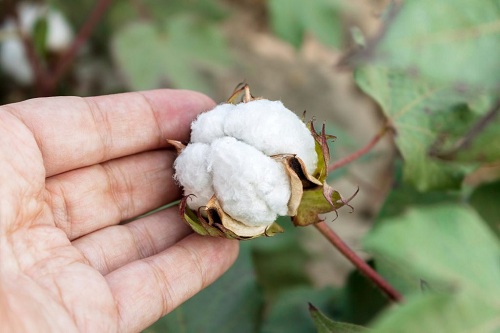 Kater Hake, Vice President-Agricultural and Environmental Research Cotton Incorporated, defines a sustainable cotton as a type of cotton that meets the current needs of human being without compromising on the wants of the future generation. Speaking at the 78th International Cotton Advisory Committee meet, had said, cotton growers across West Texas and South Africa are adopting various sustainable practices such as no or reduced till, reduced fertilizer inputs while growing cotton.
Kater Hake, Vice President-Agricultural and Environmental Research Cotton Incorporated, defines a sustainable cotton as a type of cotton that meets the current needs of human being without compromising on the wants of the future generation. Speaking at the 78th International Cotton Advisory Committee meet, had said, cotton growers across West Texas and South Africa are adopting various sustainable practices such as no or reduced till, reduced fertilizer inputs while growing cotton.
A system with 3Es
According to Hake, sustainability is a system with 3Es: Environmental, Energy and Economical. Sustainable cotton gives opportunities to farmers in developing countries by providing jobs to those who own less than one hectare of land, he adds. Though the cost of sustainable cotton may be high compared to other types of cotton, overtime costs get absorbed into the lifecycle of products.
Increase production to curb price rise
Currently, cotton prices in the US are riding $1 per pound. In such a scenario, it would be advisable to increase global production to curb this price rise, adds Professor Mohammad Negum, Chairman, International Cotton Advisory Committee. Global cotton production should be increased to 35 million metric ton per year from the current 25 million metric ton per year.
global production to curb this price rise, adds Professor Mohammad Negum, Chairman, International Cotton Advisory Committee. Global cotton production should be increased to 35 million metric ton per year from the current 25 million metric ton per year.
David Rousse, President, Association of Non-Woven Fabrics Industry (INDA), notes a greater push towards introducing plastic-free wipes substrate by 2025. He believes, climate change issue is compelling all sectors to incorporate sustainability in their operations. Hence, all sectors need to improve their communication strategies with stakeholders and consumers, he adds.
More investments from sectors
Sectors also need to attract more investments from both private and public entities, adds Hake. He opines, such investments would bring in great benefits for the cotton sector like increasing fiber strength, leading to a reduction in the weight of cotton garments and the amount of fiber needed to make durable products.
Plastic pollution in small water systems and large marine environments is already driving the sustainable development of biodegradable products, he adds.












